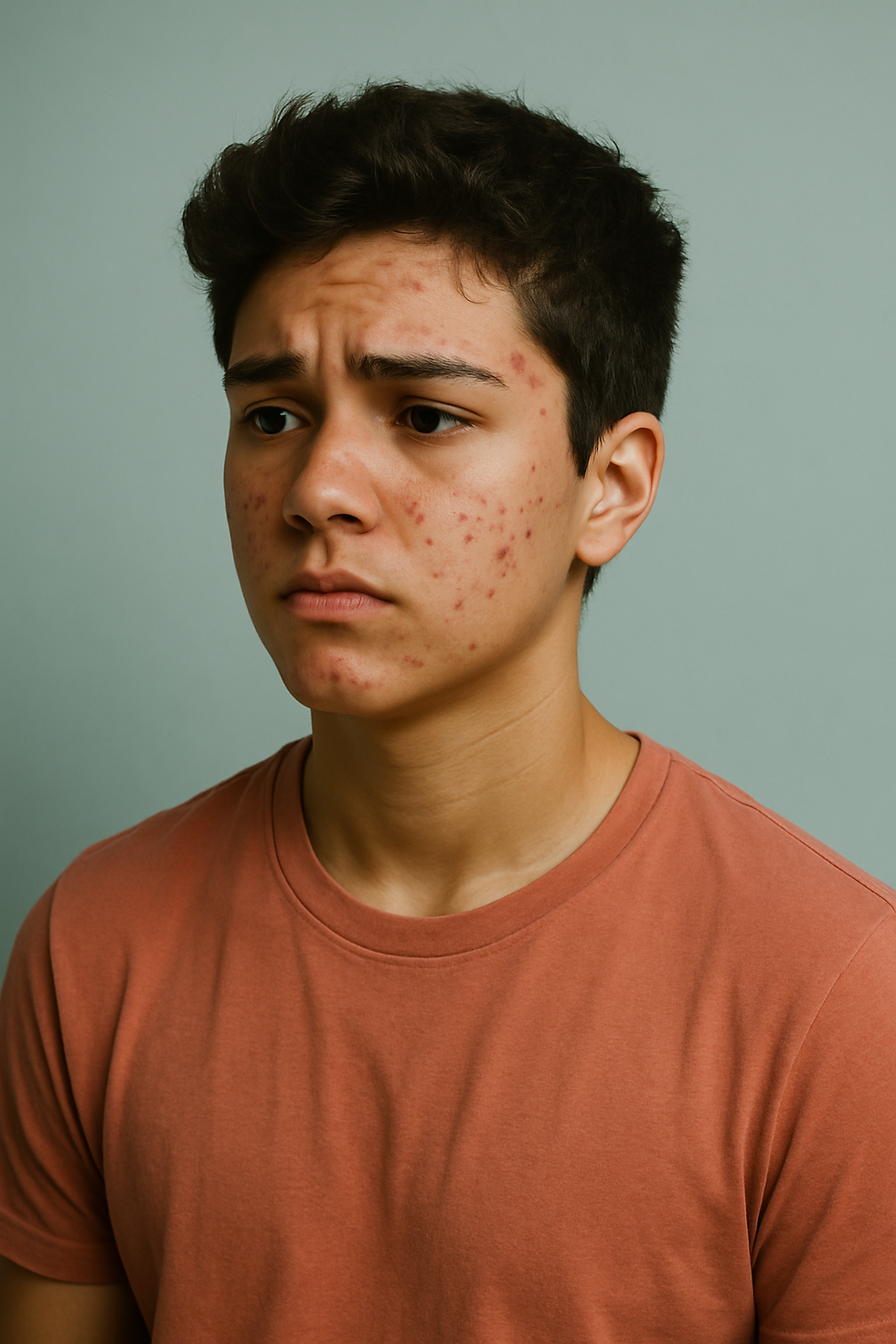Alopecia: Is it all the same?
- Saryna Young, MD, FAAD
- Jul 15, 2022
- 4 min read
Updated: Aug 19, 2022
April 10, 2022
Alopecia became a headline March 27, 2022 after a sensational incident at the 94th Academy Awards. In dermatology offices, alopecia, hair loss, has always been a major headline. As dermatologists, we are well aware of the high prevalence of hair loss of not just men, but women. And for women especially, we have witnessed how any form of hair loss/alopecia can have dramatic and devastating impact on quality of life.
The documented psychosocial complications of hair loss are many. They include depression, low self -esteem, reduced self confidence and less frequent and enjoyable social engagement.
As a society, we place value on hair. As best emphasized by celebrities whose career success included hairstyles that became iconic: Farrah Fawcett and Jennifer Aniston and "the Rachel." The societal pressure for women to be attractive includes certain hair goals. Hair styling and products, it is a billion dollar industry!
Alopecia is a general term for hair loss. I want to address 3 common forms of alopecia here: 1) Androgenic Alopecia 2) Alopecia Areata 3) Traction Alopecia
The first is androgenic alopecia. This is the most common type of hair loss for both men and women, affecting over 80 million people in the United States alone. This what is commonly referred to as genetic or age related hair loss. First line treatment is minoxidil, a.k.a Rogaine. Not the shampoo but the leave on product.
Minoxidil is an effective treatment for all hair loss or alopecia forms but its large data of safety and efficacy come from over 30+ years of evidence based treatment of androgenic alopecia. I am discouraged by the unfounded and disserving internet babble on the down side of minoxidil that discourages innumerable sufferers of hair loss from using this "gold standard" alopecia treament. Minoxidil is available over the counter at CVS, online at popular sites such as Hers/Hims and Keeps.
Topical hormones can also help both men and women, without the systemic side effects. Our Young Skin Dermatology private label Minoxidil Plus includes progesterone for women and finasteride for men.
I often tell my patients, "Minoxidil is the meat and potatoes of hair loss treatment. The other add-ons: oral prescriptions, platelet rich plasma, low level LED light, various oral supplements are all icing on the cake. They can improve outcomes but start with the basics."
The second type of hair loss is alopecia areata. This is Jada Pinkett's diagnosis as she bravely exposed on her facebook show redtabletalk.com. According to the National Alopecia Areata Foundation (naaf.org), 6.8 million Americans are diagnosed with Alopecia Areata. Alopecia areata is a common autoimmune disease causing round smooth patches of hair loss on scalp, face and other areas of body in both men and women. Minoxidil still may help this type of hair loss, but the cornerstone of treatment is injectable cortisone medication or steroids. Just as in androgenic alopecia we do not have a cure, only treatments for this disease process. As Jada pointed out, the injections of cortisone helped but can be frustrating as it is not permanent.
Recently, a medication class called the JAK kinase inhibitors, which modify the immune system have been shown to effectively treat alopecia areata. Systemic immune modifiers such as these come with a lot more side effects than intralesional steroid injection. Despite those risks, I have personally witnessed the life changing effects for my patients who are on it and have no signs of alopecia areata. It boosts their confidence and social engagement. And, for the young adults embarking on a career, it has given them a immeasurable step up in the pressure cooker that is the job recruitment process.
The third type of hair loss is a type that ironically Chris Rock shown a spotlight on in his 2009 documentary "Good Hair." He was inspired to investigate hair practices by his daughters, as he witnessed them as young girls internalizing some cultural hair goals that are nearly impossible to attain. This category of alopecia includes a few subtypes but the most common and reversible type is traction alopecia.
The third type, traction alopecia, is an epidemic in my practice. One thing that contributes as Chris Rock pointed out: "the biggest moneymaker in the hair business (are) weaves. Black women can spend six to eight hours getting their hair braided into tiny sections. Stylists then delicately attach tracks of hair—which can be simple extensions or full wigs—to the braids."
Unfortunately, no matter what your weave technique, the traction or friction on hair stresses the scalp and follicles, which causes inflammation and can lead to eventual scarring - or permanent- hair loss.
Even a loose pony tail in susceptible patients of all skin types can lead to permanent hair loss. "Ponytail alopecia" is a type of traction alopecia.
To treat traction alopecia the most important and hardest part is switching to gentler hairstyles. Or to embrace the best therapy- wear your hair free! Injections of cortisone, hair transplantation and minoxidil can also help.
There are many types of hair loss/alopecias. We have just touched on 3 common types here. Also I find most female patients have more than one type occurring at the same time, ie: androgenic and traction alopecia. We have many treatments for hair loss but no cures.
If you are experiencing hair loss, an evaluation and treatment from a board certified dermatologist can improve qualify of life and hair!
Alopecia is not all the same. The treatments can be tailored to you.
Sincerely,
Saryna Young, MD, FAAD





Comments